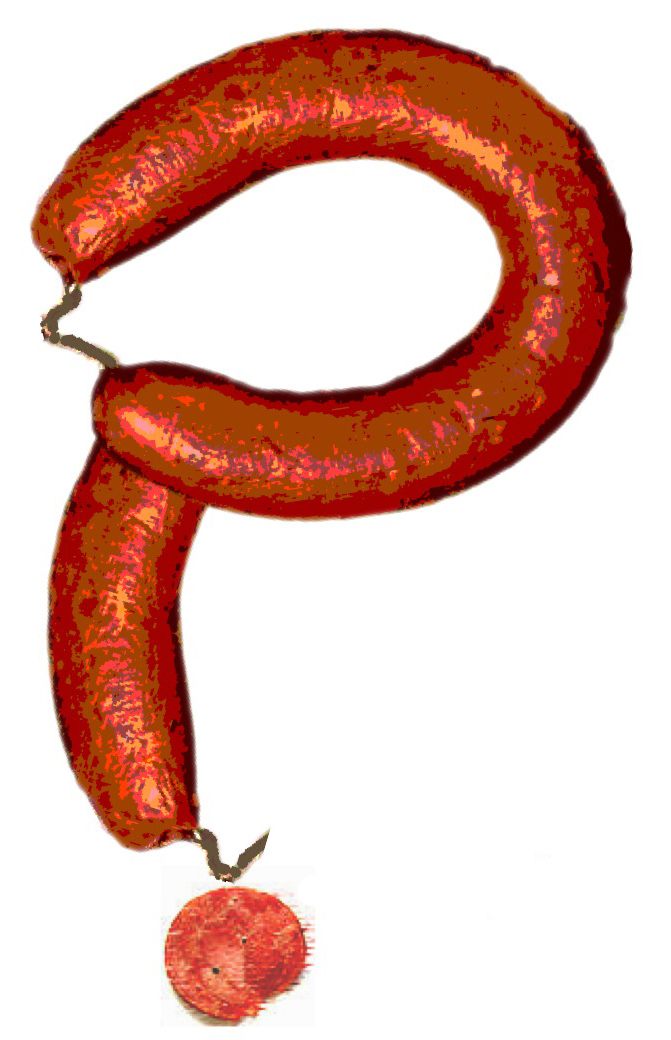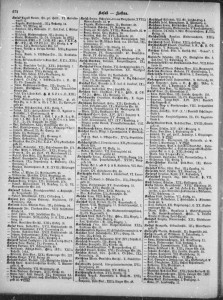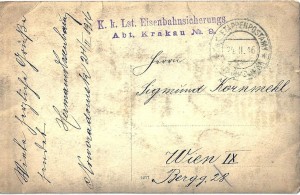
Focus, focus, focus.
That’s been my mantra ever since I realized my genealogical research was meandering in all directions.
So I came up with a couple of goals: To flesh out the lives of my mother’s immediate family members — both to understand my mother better and to make the acquaintance of relatives I never met — and to figure out the family’s place in history. The second sounds a little grandiose, but when you’ve got a great uncle who shared an address with Sigmund Freud for 44 years and literally provided Freud’s food for thought, it’s not unreasonable.
And last week I gave myself a virtual kick in the butt by promising to post 10 questions that I need to answer in order to try to meet those goals. A little dorky, but it worked.
A Bit of Context
In the Family History section of this blog, I’ve detailed the cast of characters involved and a chronology of their lives, as I currently know it. Refer to that if you’re confused — or if you just want to check out the family history. It’s pretty interesting, if I say so myself.
But in brief: My mother’s family consisted of the eight Kornmehl siblings pictured in the header of this blog. The one circled, Siegmund Kornmehl, was Sigmund Freud’s butcher.
In no particular order…
The Ten Questions (not Commandments)
1. All three males of the eight Kornmehl siblings were butchers. What were the occupations of the five brothers-in-law who were not in the meat trade?

I’m embarrassed to admit that I’m not really sure what my grandfather, Hermann Rosenbaum, did. I recall my mother saying that her father was a traveling stationery salesman, but I’m not sure if that recollection is accurate — or what it even means. Did he sell paper to shops? Go house to house to individual letter writers? What kind of paper? Was that a lucrative trade? I wish “stationery” as in paper and “stationary” as in staying still were spelled the same so I could make a pun about my grandfather’s profession being an oxymoron (ha! snuck it in anyway).
Hermann Rosenbaum isn’t listed in any of the pre-World War II Vienna address books, which noted professions as well as addresses, though I found one of the in-laws, David Schmerling, who is called a “goldsmith.” Again, that could mean a lot of things — jeweler, maybe?
It makes me wonder what criteria would be used to list writers. How many articles or books would you need to have published to get a “der Autor” next to your name? And could they take your listing away if you had writer’s block for a year?
But I digress.
2. What is the derivation of the name Kornmehl?
This isn’t as obvious as you might think — and, okay, it’s a bit of a ringer. My friend Lydia researched this topic because she is a translator and an inveterate genealogist and she got curious. I have a guest post from her that I will run when she comes back from Sweden where she is researching her husband’s family.
3. What were the relationships of the eight Kornmehl siblings — and their children — with each other?
With eight siblings and their spouses, there are bound to be some relationships that are closer than others, some more problematic. Based on a lot of anecdotal evidence and a bit of documentation — and the absence thereof — I have a sense there was a close connection between my grandparents and two other families, those of David and Mizzi Schmerling and Siegmund and Helene Kornmehl.
4. Did my great aunt marry her brother?
I just wanted to see if you were paying attention. I know my great aunt didn’t marry her brother. I also know that my great grandparents didn’t give two of their sons the same name. And yet there are two Siegmund Kornmehls in the family picture on the banner of the blog.
When I first discovered this oddity, I thought my mother must have been mistaken in her labeling. But the information was confirmed in the handwritten family tree that my mother created.
There’s a lot of information on one of the Siegmund Kornmehls — the one who sold meat to the Freud family — but the other one remains a mystery. It’s clear that he married one of the sisters, Anna; that he was born in 1875 and died in Vienna in 1938; that he and Anna had four children together; and that he favored a full beard while his brothers-in-law were clean shaven. It’s also clear that he must be a relative of some sort. But that’s it so far.
5. Where and on what occasion was the family photograph alluded to in question #4 taken?
If this picture is going to be on a book cover, as I hope it will be, identification is definitely in order.
6. Would Sigmund Freud and his family butcher have had any interactions outside of the building where they both rented space?
It seems reasonable that the two Sigmunds might have belonged to some of the same fraternal organizations, such as B’nai B’rith, where Freud gave his first series of lectures (as a Jew, he wasn’t given a forum at Viennese universities). Siegmund Kornmehl was involved with the Jewish community, as I would imagine most middle-class Jews were, if only because they were excluded from other communities. There’s a good chance, then, that there would have been some overlap of social circles.
7. Was Freud the type of man who would have schmoozed with his butcher if he did see him at a lodge?
There is a massive amount of literature on Freud’s life, and many of his journals and letters were preserved, but all interpretations of his character based on his writings are necessarily subjective. To use just a recent example, the movie A Dangerous Method provides a very different portrait of Freud than the play Freud’s Last Session does. The Freud in Freud’s Last Session would have schmoozed with his butcher; the Freud in A Dangerous Method would have snubbed him.

8. Did Freud really see my mother’s cousin Stella as a patient? If so, when and for how long?
The answers to the previous two questions very much relate to these. According to my mother, her cousin Stella was sent to see Dr. Freud in the hope that he could cure her limp. Stella had already been to many conventional doctors and her parents’ last hope was that her problem was psychosomatic.
But Freud was very busy and Stella was only — as far as I currently know — his butcher’s niece. Did that consult really happen?
9. What was life like in Vienna for butchers in general and kosher butchers in particular when the Kornmehl family operated their many businesses?
These are questions related to politics as well as to class and religion; I found an article in an Australian journal from 1897 that says butchers took advantage of limited shipments of meat from overseas to fix prices and that they were very powerful on the Vienna city council. Since members of the Kornmehl family operated both kosher and nonkosher butcher shops, I imagine this applied to them to some degree.
10. At what point should I end the story?
I don’t want to focus on the Holocaust here. Why should members of the Kornmehl family be defined solely by the success — or lack thereof — in escaping the life I’m aiming to describe? And yet… There’s a lot of information to be gleaned from the records the Nazis and their Jewish “employees” kept when they were confiscating Jewish property during the war. I can’t ignore it. Nor can I ignore the impact that losing her immediate family would have had on my mother, no matter how hard I try to reconstruct her “before the war” personality.
That’s it. But I promise not to stop meandering on this blog because you always find life’s most interesting things off the beaten path.

I believe Freud was a schmoozer, not a snubber. There’s a book, told from the pov of many of Freud’s patients, who described him as warm, funny, and very personable.*
Why shouldn’t he be? He was pretty much** the master of his universe!
LCK
*I don’t know the title. Sorry.
**Except for the anti-Semitism thing.
I’m very glad to hear that, Lee. That might make a good title for a book — Sigmund Freud: Supreme Schmoozer (I think Schmoozer Supreme sounds too much like a super-sized meal).
I will try to find the book. It sounds like fun — and of course will support my point that Freud would have talked to my great uncle.
Yeah, that anti-Semitism thing did put a crimp in Freud’s style but it did force him to go to London where he was a superstar.
All really great questions. I am curious myself as to how they chose professions to appear in the address books. I am assuming only men were listed and back then I am sure people were defined more by their line of work than they are now, given they remained in the same career their whole lives, but it’s still interesting.
It’s great you have been able to uncover so much so quickly. I’ve always thought I would need to travel and dig through church records to find such information about my family. It seemed like such an enormous undertaking. Perhaps I was wrong. We may not have a famous historical connection but there may be more out there than I thought.
Thank you for taking us with you as you figure it all out!
Oddly, Kristine, it wasn’t only men who were listed. I’d have to go back and verify this, but I seem to recall some of my great aunts being listed — and then disappearing from the address records after they were married (that part is not surprising).
I’m sure there’s more information out there than you imagined — and not only through expensive services like Ancestry.com. So many things are online now that it’s mind-boggling: address books from the late 19th century, marriage registries… And most of my research started with Google!
Thank *you* for coming along; it’s great to have the company.